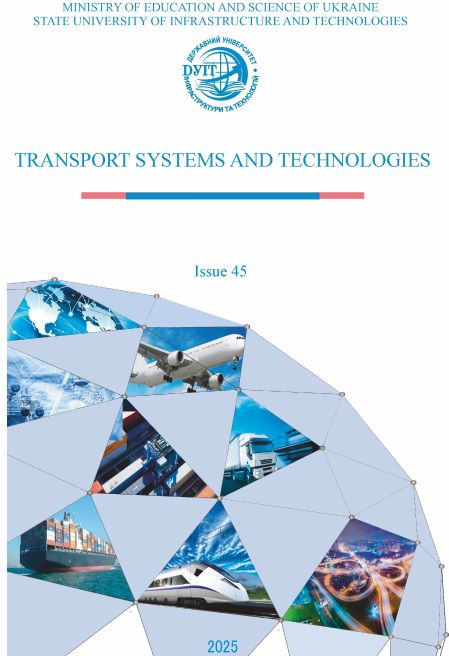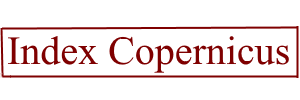Comparative analysis of the quality of fractal image compression with JPEG and JPEG2000 standards
Keywords:
image, compression, lossy, lossless, fractal compression, LPIPS, PSNR, SSIMAbstract
This paper presents a comparative analysis of three image compression methods: JPEG, JPEG2000, and fractal compression (FIC). The theoretical foundations of each method are reviewed, including the discrete cosine transform (DCT) for JPEG, the discrete wavelet transform (DWT) for JPEG2000, and the iterated function system (IFS) for FIC. The performance of the algorithms is evaluated using a set of metrics: compression ratio (CR), peak signal-to-noise ratio (PSNR), structural similarity index (SSIM), and the learned fragment image similarity metric (LPIPS). The analysis shows that JPEG2000 generally provides better quality at a given bitrate than JPEG, especially at high compression ratios, and offers additional features such as scalability, but this advantage is rather small. JPEG remains popular due to its simplicity and speed, but suffers from block artifacts. Fractal compression, despite its theoretical advantages, such as potential resolution independence, has significant drawbacks, including extremely slow encoding and often uncompetitive quality on general images. The application areas, reasons for limited implementation, and the current relevance of FIC are discussed. It is concluded that it is necessary to use various metrics for comprehensive quality assessment and that the choice of the optimal compression method depends on the specific requirements of the application.
References
Russ, J. C. (2006). The image processing handbook. CRC press.
Patel, N., & Sadleir, R.J. (2023). CompaCT: Lossless medical image compression via fractal pixel traversal and dynamic segmentation. arXiv preprint arXiv:2308.13097. https://arxiv.org/abs/2308.13097.
Li, T., Sun, Q., Fan, L., & He, K. (2025). Fractal generative models. arXiv preprint arXiv:2502.17437. https://arxiv.org/html/2502.17437v1.
Xiao, S., Guo, Y., Peng, H., Liu, Z., Yang, L., & Wang, Y. (2025). Generalizable AI-Generated Image Detection Based on Fractal Self-Similarity in the Spectrum. arXiv preprint arXiv:2503.08484. https://arxiv.org/html/2503.08484v1.
Gertsiy, O., (2024). Research on graphic data formats for compact representation and comparison of images. Collection of scientific works of the State University of Infrastructure and Technologies series "Transport Systems and Technologies", (43), 173–187. https://doi.org/10.32703/2617-9059-2024-43-14.
Shrestha, B. (2005). Evaluation of JPEG2000 for lossless medical image compression. Mississippi State University Libraries. https://www.gri.msstate.edu/publications/docs/2005/03/4328BijayShrestha_2005.pdf.
Garmash, V.V., Kulyk, A.Y. (2010). Blocking Artifacts Reduction Method in JPEG- images. Artificial Intelligence, (4), 177-184.
Gonzalez, R. C. (2009). Digital image processing. Pearson education india.
Welstead, S. T. (1999). Fractal and wavelet image compression techniques (Vol. 40). Spie Press.. https://doi.org/10.1117/3.353798.
Zhu, L., Zeng, X., Chen, B., Chen, P., Li, Y. H., & Wang, S. (2025). Leveraging Diffusion Knowledge for Generative Image Compression with Fractal Frequency-Aware Band Learning. arXiv preprint arXiv:2503.11321. https://arxiv.org/html/2503.11321v1.
A. Djeacoumar, A., Mujkanovic, F., Seidel, H. P., & Leimkühler, T. (2025, April). Learning Image Fractals Using Chaotic Differentiable Point Splatting. In Computer Graphics Forum (p. e70084). https://arxiv.org/html/2502.17230v1.
Chen, C. H., Yao, Y., Page, D. L., Abidi, B., Koschan, A., & Abidi, M. (2006). Objective Image Quality Evaluation for JPEG, JPEG 2000, and Vidware Vision TM. In Advances in Image and Video Technology: First Pacific Rim Symposium, PSIVT 2006, Hsinchu, Taiwan, December 10-2006. Proceedings 1 (pp. 751-760). Springer Berlin Heidelberg. https://doi.org/10.1007/11949534_75.
Kim, J,H,, Lee K,H,, Kim, B., & Yoo, S,K, (2010). Evaluation of JPEG2000 compression efficiency by using physical factors in computed radiography images. Journal of the Korean Physical Society, 56(3), 856–861. https://doi.org/10.3938/jkps.56.856.
Gertsiy, O., & Butryk, N. (2021). Comparative analysis of compact methods representations of graphic information. Collection of scientific works of the State University of Infrastructure and Technologies series "Transport Systems and Technologies", (37), 130–143. https://doi.org/10.32703/2617-9040-2021-37-13.
Singh, S., Singh, BK, & Mohan, A. (2024). Perceptual quality assessment of compressed images using different JPEG standards. Information, 15(5), 261. https://doi.org/10.3390/info15050261
Zhang, K., Liang, J., Van Gool, L., & Timofte, R. (2021). Designing a practical degradation model for deep blind image super-resolution. In Proceedings of the IEEE/CVF international conference on computer vision (pp. 4791-4800). https://doi.org/10.48550/arXiv.2103.14006.
Breger, A., Biguri, A., Landman, M. S., Selby, I., Amberg, N., Brunner, E., ... & Schönlieb, C. B. (2025). A study of why we need to reassess full reference image quality assessment with medical images. Journal of Imaging Informatics in Medicine, 1-26. https://healthmanagement.org/c/imaging/News/the-limits-of-image-quality-measures-in-healthcare.
Arabboev, M., Begmatov, S., Rikhsivoev, M., Nosirov, K., & Saydiakbarov, S. (2024). A comprehensive review of image super-resolution metrics: classical and AI-based approaches. Acta IMEKO, 13(1), 1-8. https://doi.org/10.21014/actaimeko.v13i1.1679.
Patel, Y., Appalaraju, S., & Manmatha, R. (2021). Saliency driven perceptual image compression. In Proceedings of the IEEE/CVF winter conference on applications of computer vision (pp. 227-236). https://openaccess.thecvf.com/content/WACV2021/papers/Patel_Saliency_Driven_Perceptual_Image_Compression_WACV_2021_paper.pdf.
Chen, B., Li, Y., Zeng, N., & He, W. (2019). Fractal lifting wavelets for machine fault diagnosis. IEEE Access, 7, 50912-50932. https://doi.org/10.1109/ACCESS.2019.2908213.
Downloads
Published
How to Cite
Issue
Section
License

This work is licensed under a Creative Commons Attribution 4.0 International License.
Copyright: This is an open-access article distributed under the terms of the Creative Commons Attribution License, which permits unrestricted use, distribution, and reproduction in any medium, provided the original author and source are credited.














